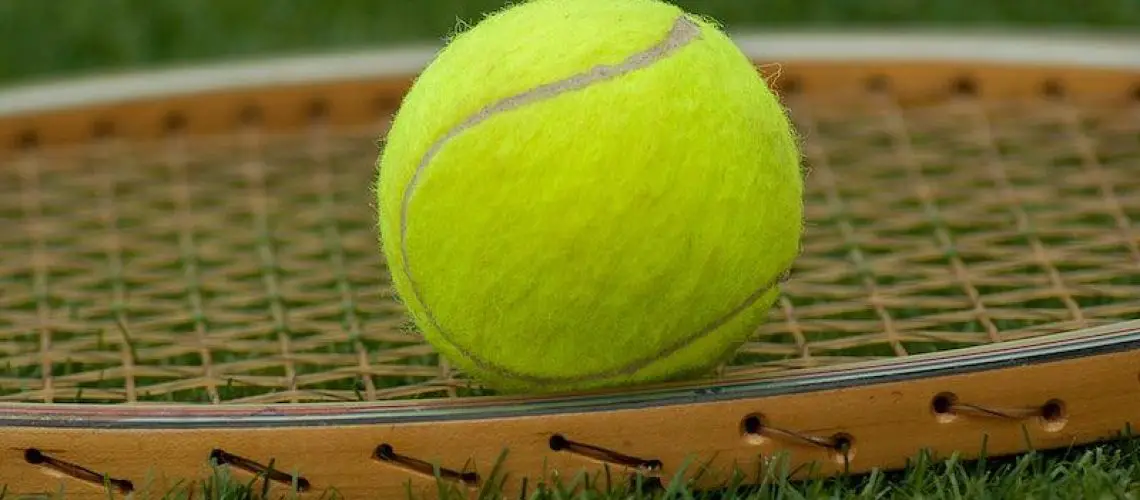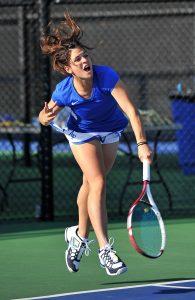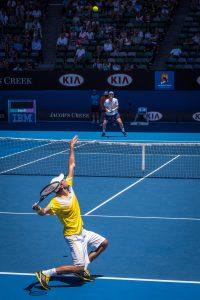We may earn money or products from the companies mentioned in this post.
A Quick Summary
Pickleball is a paddle sport that has grown in popularity due to its accessibility and cost-effectiveness. When playing on a tennis court, players must adjust their technique and strategy to give themselves an advantage, such as adapting their serve technique, playing at the baseline or approaching closer to the non-volley zone/kitchen line strategically, and transitioning effectively from volley exchanges back to groundstrokes.
Introduction to Pickleball and Tennis Court Compatibility
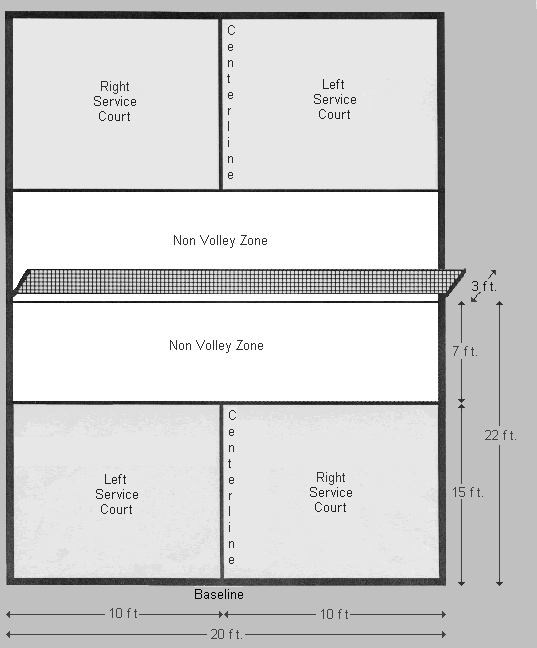
Brief Overview of Pickleball and Its Growing Popularity
Pickleball is a paddle sport that combines elements of tennis, badminton, and ping pong It was invented in 1965 on Bainbridge Island, Washington, by three dads who were looking for a way to keep their kids entertained during the summer months The game quickly gained popularity among families and friends and has since grown into a competitive sport with its own governing bodies and tournaments
In recent years, pickleball has exploded in popularity across the United States and beyond According to the Sports & Fitness Industry Association (SFIA), there are currently over 3 million active pickleball players in the US alone This growth can be attributed to several factors: it’s an easy-to-learn game that can be played by people of all ages and skill levels; it’s a low-impact sport that is easier on joints than other high-intensity activities like running or basketball; and it provides a social outlet for players who enjoy meeting new people while getting some exercise
Explanation of How Tennis Courts Can Be Adapted for Pickleball Play
One of the reasons for pickleball’s surge in popularity is its ability to be played on existing tennis courts with minimal modifications At its core, pickleball requires a court that measures 20 feet wide by 44 feet long – which is roughly one-third the size of a standard tennis court
To adapt a tennis court for pickleball play, temporary boundary lines can be added using tape or chalk to mark out the smaller court dimensions Portable nets are also available for purchase that can be set up easily on any flat surface
Many public parks and recreation centers have already converted underutilized tennis courts into dual-use facilities that cater to both sports This not only maximizes the use of existing infrastructure but also provides more opportunities for people to try out pickleball without having to invest in dedicated courts
In conclusion, tennis court compatibility has played a significant role in pickleball’s growing popularity as it provides an accessible and cost-effective way to play the sport With more and more facilities offering both tennis and pickleball options, it’s easier than ever for players of all ages and skill levels to get involved in this exciting and social sport
| Key Point | Description |
|---|---|
| Tennis court compatibility | Existing tennis courts can be easily adapted for pickleball play |
| Cost-effective | No need to invest in dedicated courts, maximizing infrastructure |
| Accessible for all age groups | Dual-use facilities offer opportunities for diverse players |
Necessary Equipment and Modifications for Playing Pickleball on a Tennis Court
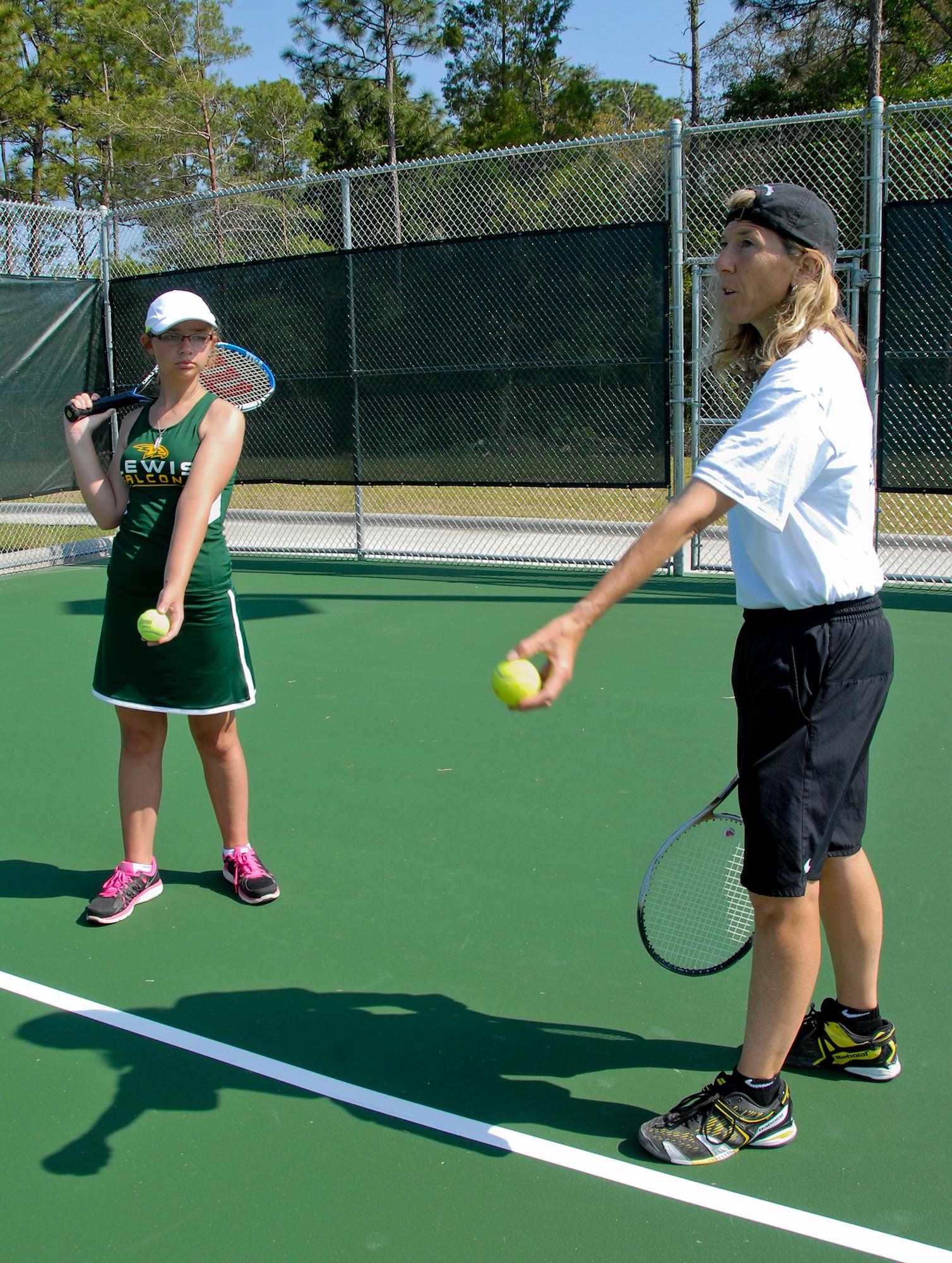
Pickleball Paddles, Balls, and Portable Nets: Essential Equipment
Pickleball is a sport that requires specific equipment to play The three main pieces of essential equipment are pickleball paddles, balls, and portable nets When choosing the right paddle and ball for your skill level, it’s important to consider the materials used in their construction
For beginner players, a composite or wood paddle with a polymer core is recommended as they provide more control over the ball’s speed and direction As you progress to an intermediate level of play, graphite or carbon fiber paddles with polypropylene cores are more suitable because they offer more power when hitting the ball For advanced players who need maximum control over their shots, nomex honeycomb core paddles with carbon fiber surfaces are ideal
When it comes to balls, indoor pickleballs have smaller holes than outdoor ones which make them slower and easier to control Outdoor balls have larger holes making them faster but harder to handle It’s important to choose the right ball based on where you plan on playing
Portable nets make it possible for pickleball players to set up courts anywhere they want including tennis courts There are many types of portable nets available on the market today made from different materials such as aluminum or steel frames with mesh netting A popular option is a freestanding net system that can be easily assembled in minutes without any additional tools
Tennis Court Layout Adjustments for Pickleball Lines and Dimensions
In order to create a proper pickleball court on a tennis court surface, certain adjustments must be made to accommodate pickleball lines and dimensions
The court size for singles play in pickleball measures 20 feet by 44 feet while doubles play requires a court size of 22 feet by 40 feet This means that proper measurements and placement of temporary or permanent pickleball lines on a tennis court are necessary
Many players prefer to use removable masking tape to mark the boundaries of the pickleball court on a tennis court surface Other options include chalk, paint, or even specialized court boundary markers that can be easily installed and removed as needed
It’s important to ensure that the markings used are visible yet removable so as not to damage the tennis court surface in any way When setting up a pickleball court on a tennis court, it’s important to remember that safety should always come first By following these guidelines and using proper equipment, players can enjoy playing this fun and exciting sport on any tennis court surface
| Key Point | Description |
|---|---|
| Proper measurements | Ensure accurate pickleball court dimensions |
| Removable and visible marking | Use tape, chalk, or boundary markers |
| Prioritize safety | Avoid damaging the tennis court surface |
Different Rules for Playing Pickleball on a Tennis Court

When playing pickleball on a tennis court, there are some differences in the rules that players need to be aware of These adjustments are necessary because the dimensions of a tennis court are larger than those of a standard pickleball court Here are some specific areas where rules differ:
Court Boundary Rules Specific to the Modified Layout
The boundaries of a pickleball court on a tennis surface will inevitably be different from those of a standard pickleball court In this adapted setting, players must know which lines mark the new boundaries and avoid stepping out-of-bounds during play Specifically, players will need to adjust their play style when balls bounce off the back and side walls as these walls become legal targets for returning shots
Serving Rules Unique to Playing on a Tennis Court Surface
Players who serve have to follow different rules when playing pickleball on a tennis court When serving, players must remain behind an imaginary line that extends across the width of the service box and perpendicular to the net This is because serving from farther back would give too much advantage in terms of height and angle for server over receivers
Considerations for Singles vs Doubles Play in the Adapted Setting
There are important considerations to keep in mind when choosing between singles or doubles play on an adapted tennis surface For example, singles games can feel more spacious with longer rallies due to increased mobility around the court while doubles games may involve more strategy and quicker decision making due to reduced space
In conclusion, when playing pickleball on a tennis court surface, it’s essential that players understand how certain rules change compared to traditional games played on dedicated courts The modified layout requires careful attention regarding boundary lines while serving restrictions offer a new challenge Furthermore, singles and doubles games can both be successful on this new playing surface, but players must adapt their strategies accordingly for each format
| Key Points | Description |
|---|---|
| 1. Understanding rule changes | Players must be aware of how certain rules change when playing pickleball on a tennis court surface. |
| 2. Modified layout concerns | Attention to boundary lines and serving restrictions is critical for adapting to the new playing space. |
| 3. Singles vs doubles strategies | Players need to adjust their strategies accordingly for singles or doubles games on this modified court surface. |
Techniques, Strategies and Tips for Playing Pickleball on a Tennis Court
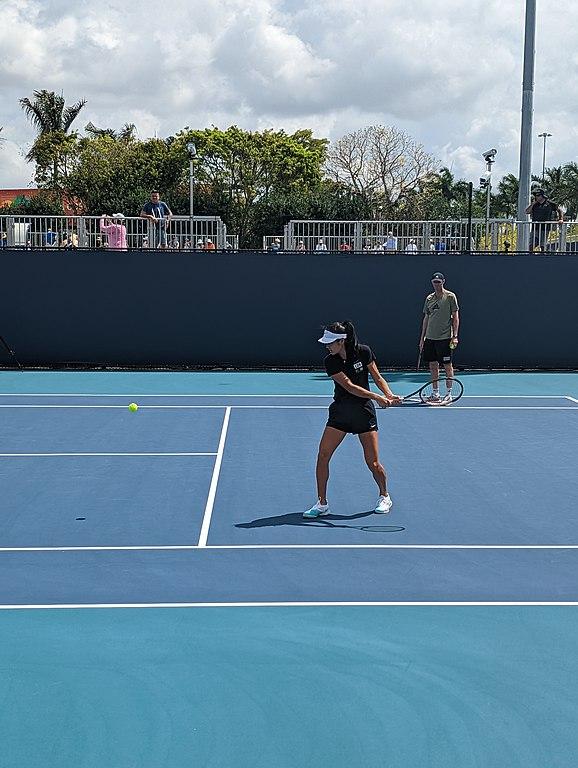
Adapting Your Serve Technique from Traditional Courts to the Larger Serving Area in Tennis Courts
Pickleball is usually played on smaller courts than tennis, so when playing pickleball on a tennis court, you’ll need to adjust your serve technique One of the most important things to consider is the larger serving area in tennis that requires you to hit the ball farther than usual To adapt your serve technique, you can start by adjusting your toss Make sure that your toss reaches an appropriate height before hitting it It may take some practice to get this right
Another way to adjust your serve technique is by changing your service location In traditional pickleball courts, players often stand closer to the baseline while serving due to a smaller serving area However, in tennis courts, players should be standing close enough to hit the ball properly while still being able to make it over the net
Lastly, using angles effectively can help give an advantage when serving When playing on a larger court like tennis courts, making use of angles can make it difficult for opponents to return serves effectively
Playing at the Baseline vs Approaching The Non-Volley Zone (Kitchen)
When playing pickleball on a tennis court, players have two options: play at the baseline or approach closer towards the non-volley zone or kitchen line If choosing to play at the baseline, strategies for groundstrokes should be considered since there are smaller boundaries compared with traditional pickleball courts
One effective strategy when approaching closer towards the kitchen line is hitting deep shots towards their opponent’s baseline which forces them back and makes it harder for them to execute good returns This gives more time for players who are moving forward from behind their own baseline
Transitioning From Volley Exchanges Back To Groundstrokes
Volley exchanges are an important part of playing pickleball regardless of the type of court being used However, when playing on a tennis court, it’s important to know how to transition from volley exchanges back to groundstrokes effectively
One way to do this is by anticipating where your opponent will hit the ball and positioning yourself accordingly If you have enough time, you can move back towards the baseline and prepare for a groundstroke Alternatively, if your opponent hits a weak shot, you may be able to take advantage of that opportunity by moving forward and hitting a winning volley
In conclusion, playing pickleball on a tennis court requires some adjustments in terms of technique and strategy By adapting your serve technique, choosing between playing at the baseline or approaching closer towards the non-volley zone/kitchen line strategically, and transitioning effectively from volley exchanges back to groundstrokes; you can give yourself an advantage over your opponents
| Key Point | Description |
|---|---|
| Adapting your serve technique | Adjust toss height, service location, and use angles effectively for serves on the larger tennis court |
| Choosing between baseline or approaching non-volley zone | Consider playing at the baseline or moving towards the kitchen line strategically based on game situation |
| Transitioning from volley exchanges to groundstrokes | Anticipate opponent’s shots, position yourself accordingly, and move back to baseline or forward as needed |
Useful Links

How to Play Pickleball on a Tennis Court? – PickleVine.com
The Easy Way To Know If You Can Play Pickleball On A …
Can You Play Pickleball On a Tennis Court? Everything …
How To Play Pickleball On A Tennis Court? – PickleballFeature
Can You Play Pickleball On a Tennis Court? Answered!
How to Play Pickleball on a Tennis Court
What Is the Difference Between Pickleball and Tennis?
Shared Courts for Pickleball and Tennis
Tennis & Pickleball Courts | City of San Clemente, CA
How to Play Pickleball on a Tennis Court – – The Sports Ground
Tennis, Pickleball, Paddle Tennis
Can You Play Pickleball On A Tennis Court? | Paddle2Racket
Pickleball & Tennis Courts | Plano, TX – Official Website
Can You Play Pickleball On A Tennis Court?
Free Tennis and Pickleball Court Reservations
Tennis and Pickleball – City of Lincoln, NE
Tennis and Pickleball – Parks and Recreation
Can You Play Pickleball On A Tennis Court? – [Easy Ways To …
Pickleball is America’s fastest-growing sport. These people …

